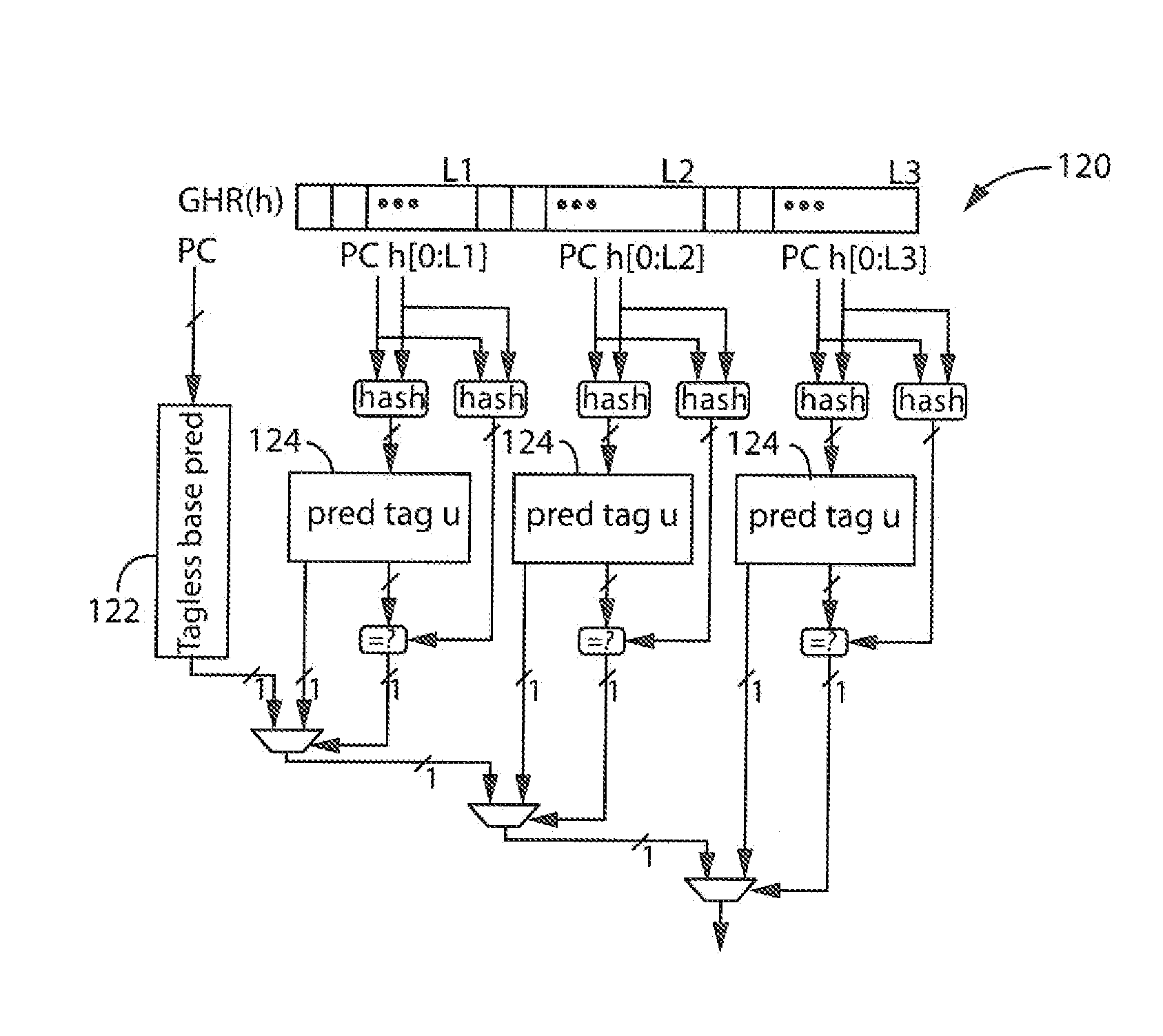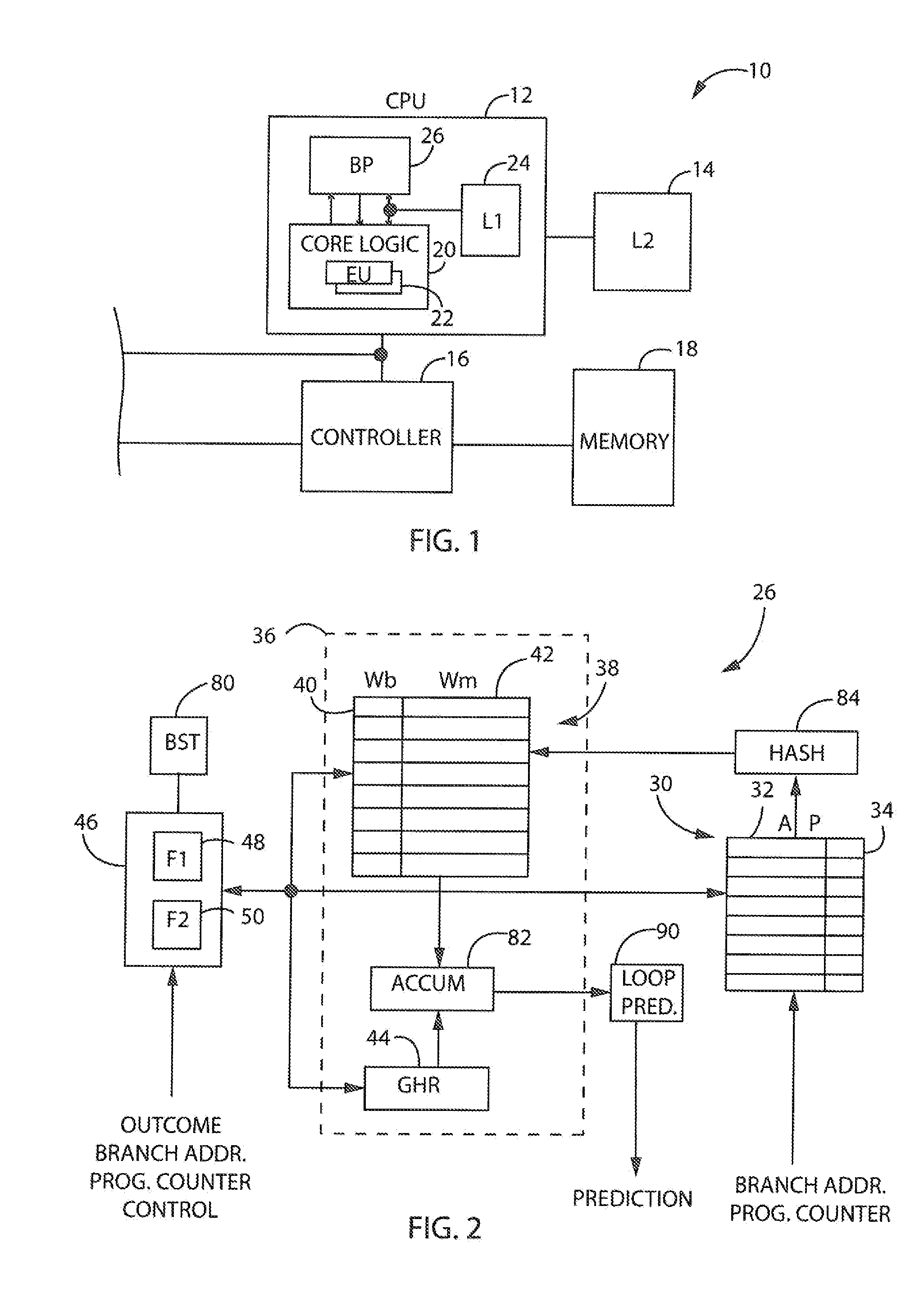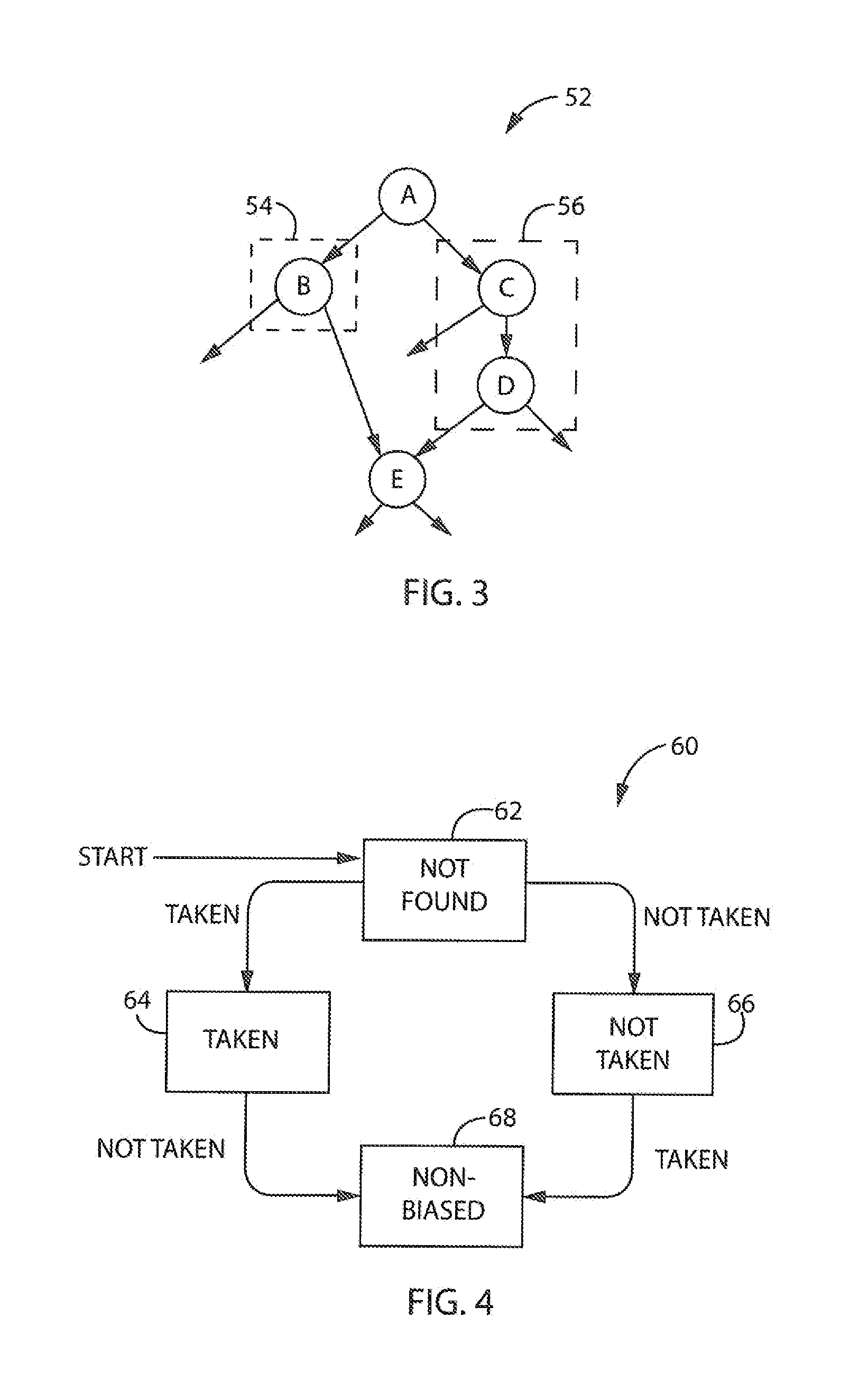Apparatus and Method for Bias-Free Branch Prediction
a branch prediction and branch prediction technology, applied in the field of computer processors, can solve the problems of increasing power consumption, increasing access latencies, and consequently limited prediction ability of forecasters, and achieves the effects of small correlation, greater prediction accuracy, and larger separation distances
- Summary
- Abstract
- Description
- Claims
- Application Information
AI Technical Summary
Benefits of technology
Problems solved by technology
Method used
Image
Examples
Embodiment Construction
[0028]Retelling now to FIG. 1, an embodiment of the present invention will be described in the exemplar context of a computer system 10 and a processor 12. The processor 12 may be one of many processors in the computer system 10 and may include various interfaces and buses for communicating with external components, such as a cache 14, a memory controller 16 and a main memory 18. The processor 12 includes core logic 20 providing a plurality of execution units 22, which may be deeply pipelined, wide-issue execution units in a preferred embodiment. The processor 12 may also include a local cache 24 containing an instruction stream for processing and execution by the core logic 20 and the execution units 22. The instruction stream may be provided by hierarchical storage elements, including the cache 14 and the main memory 18 as directed by the memory controller 16, to achieve maximal performance as understood in the art.
[0029]The processor 12 further includes a branch prediction unit 2...
PUM
 Login to View More
Login to View More Abstract
Description
Claims
Application Information
 Login to View More
Login to View More - R&D
- Intellectual Property
- Life Sciences
- Materials
- Tech Scout
- Unparalleled Data Quality
- Higher Quality Content
- 60% Fewer Hallucinations
Browse by: Latest US Patents, China's latest patents, Technical Efficacy Thesaurus, Application Domain, Technology Topic, Popular Technical Reports.
© 2025 PatSnap. All rights reserved.Legal|Privacy policy|Modern Slavery Act Transparency Statement|Sitemap|About US| Contact US: help@patsnap.com



